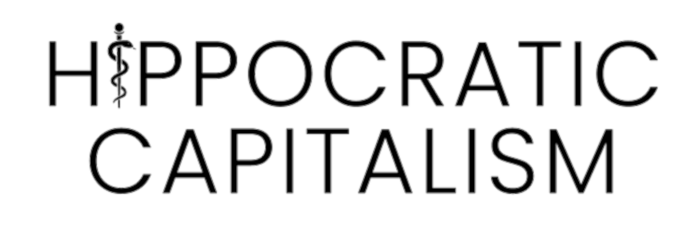What Mohair Subsidies Teach us about Healthcare Lobbying

This week’s newsletter was inspired by Wendell Potter’s excellent Healthcare Uncovered substack. (You should definitely subscribe to it if you haven’t already). In a recent entry, Potter describes the US Chamber of Commerce’s long history of lobbying on behalf of pharma and health insurer interests. For example, back in the 2000’s, America’s Health Insurance Plans (AHIP, the main insurance lobby) gave the Chamber $100M to fight against the ACA/Obamacare. Obviously they didn’t succeed in killing it, but I would argue that their lobbying was highly successful in designing the ACA marketplace to suit the interests of big commercial insurers. More recently the Chamber has been fighting tooth and nail against Medicare drug price negotiation.
But here’s what’s crazy to me: The US Chamber of Commerce represents lots of industries beyond health insurance and pharma companies. In fact, the majority of their members, including Google, ExxonMobile, and CocaCola, are non-healthcare. So when it comes to healthcare policy, why does the US Chamber of Commerce narrowly represent the interests of Big Insurance and Big Pharma, rather than the interests of US businesses more broadly? After all, American businesses spend a lot on health benefits for their employees and their dependents. Medicare may not impact them as much as the private insurance system does, but Medicare still has a huge influence on the overall structure of the market, and makes up a significant portion of payroll taxes. Put more simply: Wouldn’t it make sense for the Chamber to be fighting for lower healthcare costs, rather than fighting to preserve high costs?
I suspect the answer has something to do with mohair subsidies.
Years ago I read a book — unfortunately I can’t find the title anymore — that explained basic economic concepts to non economists. The story on mohair subsidies stuck in my mind.
Back during WWII and the Korean Conflict, the US military had to import wool for military uniforms. To reduce this dependence, Congress passed the 1954 National Wool Act that included payments to ranchers raising Angora goats for mohair. Six years later, in 1960, the military removed wool from their list of strategic materials because they were switching to synthetic fabrics. Yet the mohair subsidies continued. For decades. This 1991 Jonathan Rauch article helped marshal support for a 1993 bill that finally ended the subsidy. But even that wasn’t the end of the story, because mohair subsidies were resurrected in subsequent farm bills. These too proved highly resistant to congressional efforts to end them. (Here’s Utah’s Jason Chaffetz using a goat photo op to call attention to the issue .)
So at this point you might be imagining that the mohair lobby must be a pretty large one. That there must be a lot more Angora goat farmers out there than you realised. But you would be wrong.
Here’s the principle laid out in that economics primer: The effectiveness of a political lobby is inversely proportional to the number of individuals or companies who stand to benefit. Yes, you read that correctly. The smaller the special interest group, the more lobbying leverage they tend to have in Congress. Why is this?
It comes down to math. In 1990, for example, the US government paid $60M to Angora goat ranchers. Now, pretend that most of that money went to the 100 largest Angora goat ranches, so that averages to perhaps $500K per rancher. For each of those ranchers, the threat of losing $500K/year creates a pretty strong incentive to call their congressperson. Now in contrast, the total US population that year was 250 million, which meant that all the rest of us were paying an average of about 25 cents each to those ranchers. 25 cents per year just isn’t a strong incentive to complain to your congressperson about the mohair subsidy, especially when there are so many other political issues out there to complain about.
So back to the Chamber of Commerce lobbying on behalf of healthcare companies in ways that are counter to the interests of the rest of American business. My theory is that this is an Angora goat problem. Healthcare products and services represent 100% of the revenue of pharmaceutical and insurance industries, but health benefits represent <5% of overall costs for all the rest of the industries represented by the Chamber. 100% beats <5%. And just like a junkie who will go to any length to score their next fix, healthcare corporations will go to just about any length to fight off threats to their revenue addiction.
